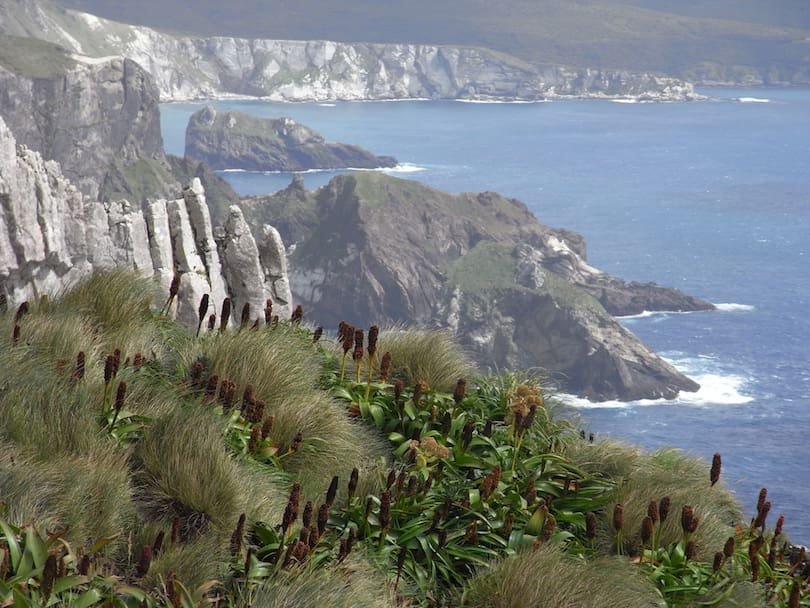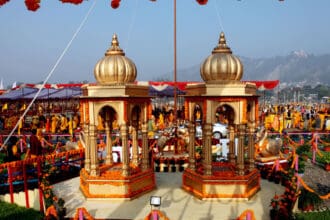Arizona, also known as the Grand Canyon State, is a captivating destination that offers a wide range of tourist attractions. From stunning natural landscapes to vibrant cultural experiences, Arizona has something for every traveler. In this article, we will explore the top ten tourist attractions in Arizona, showcasing the state’s beauty and diversity.
I. Introduction
When it comes to natural wonders, Arizona’s list of attractions is awe-inspiring. From the world-famous Grand Canyon to the enchanting red rock landscapes of Sedona, the state offers breathtaking sights that leave visitors speechless. Moreover, Arizona is home to diverse ecosystems, ancient Native American cultures, and charming small towns, making it a must-visit destination for both nature lovers and history enthusiasts.
II. The Grand Canyon
Undoubtedly one of the most iconic natural wonders on the planet, the Grand Canyon never fails to amaze. Its vastness and striking beauty draw millions of visitors each year. The sheer magnitude of the canyon, carved by the Colorado River over millions of years, is a testament to the forces of nature. Travelers can explore the South Rim or venture to the less crowded North Rim to witness panoramic vistas that will leave them in awe. Hiking trails, helicopter tours, and river rafting are among the activities available for those seeking a closer encounter with this geological wonder.
III. Sedona’s Red Rock Country
Nestled amidst stunning red rock formations, Sedona offers a unique blend of natural beauty, spiritual experiences, and outdoor adventures. The vibrant hues of the rocks create a surreal atmosphere, attracting artists, photographers, and nature enthusiasts. Visitors can embark on scenic hikes, mountain biking trails, or jeep tours to explore the mesmerizing landscapes. Additionally, Sedona is known for its spiritual vortexes, which are believed to possess healing and transformative energies, making it a popular destination for those seeking spiritual rejuvenation.
IV. Antelope Canyon
Antelope Canyon is a breathtaking slot canyon located on Navajo land near Page, Arizona. The swirling sandstone walls, carved by wind and water over centuries, create a captivating display of light and shadow. The canyon is divided into two sections: Upper Antelope Canyon (Tsé bighánílíní), known for its stunning light beams that penetrate the narrow crevices, and Lower Antelope Canyon (Hasdestwazi), which offers equally mesmerizing formations. Visitors can join guided tours to explore these natural wonders and capture the beauty through their camera lenses.
V. Monument Valley
Iconic and instantly recognizable, Monument Valley is a symbol of the American West. The towering sandstone buttes, set against a backdrop of vast desert landscapes, have been featured in numerous movies and photographs. Located on Navajo land, the valley offers visitors a chance to experience Navajo culture and traditions. Guided jeep tours take visitors through the valley, showcasing the majestic formations and sharing stories of the indigenous people who call this place home. Camping under the starry desert sky is also a popular option for those seeking an immersive experience.
VI. Horseshoe Bend
A natural marvel created by the mighty Colorado River, Horseshoe Bend is a horseshoe-shaped meander that has become an Instagram sensation. Located near Page, Arizona, this awe-inspiring viewpoint offers a breathtaking panorama of the emerald green river winding its way through the deep canyon. Visitors can hike to the edge of the cliff and witness the dramatic bend firsthand, but caution is advised due to the lack of guardrails. The vista is particularly spectacular during sunrise and sunset, when the colors of the canyon are enhanced.
VII. Saguaro National Park
Named after the majestic saguaro cactus, Saguaro National Park protects one of the most iconic desert landscapes in the United States. Located near Tucson, the park showcases the beauty of the Sonoran Desert and its unique flora and fauna. Hiking trails wind through the cactus-dotted hills, offering visitors a chance to get up close and personal with these magnificent giants. Wildlife enthusiasts can spot a variety of desert creatures, including roadrunners, Gila monsters, and desert tortoises. The park is divided into two districts, the Tucson Mountain District and the Rincon Mountain District, each offering different experiences and stunning vistas.
VIII. Historic Route 66
For those seeking a nostalgic road trip experience, Historic Route 66 is a must. This iconic highway, stretching from Chicago to Los Angeles, traverses Arizona, offering travelers a chance to explore the remnants of the golden age of American road trips. Along the way, visitors can stop at quirky roadside attractions, classic diners, and vintage motels that harken back to a bygone era. Iconic stops include the Wigwam Motel in Holbrook and the Hackberry General Store, both of which offer unique photo opportunities and a taste of Americana.
IX. Lake Powell
Lake Powell, a man-made reservoir on the Colorado River, is a paradise for water enthusiasts. With its crystal-clear blue waters surrounded by towering red rock cliffs, it’s a sight to behold. Boating, fishing, and kayaking are popular activities, allowing visitors to explore the numerous side canyons and hidden coves. Houseboat rentals offer a unique way to experience the lake, combining accommodation and exploration in one. Rainbow Bridge National Monument, one of the world’s largest natural bridges, can be accessed by boat from Lake Powell, providing an extra dose of natural wonder.
X. Petrified Forest National Park
Petrified Forest National Park is a captivating testament to prehistoric times. The park is home to a large concentration of petrified wood, ancient trees that have turned into stone over millions of years. The vibrant colors and intricate patterns found in the petrified logs make them a photographer’s dream. Hiking trails wind through the otherworldly landscape, offering visitors a chance to marvel at the petrified wood and the vastness of the Painted Desert, a multi-hued expanse of badlands that stretches as far as the eye can see.
XI. Tonto National Forest
Encompassing nearly three million acres, Tonto National Forest is the fifth-largest forest in the United States and a playground for outdoor enthusiasts. The forest boasts diverse ecosystems, ranging from desert valleys to towering mountains. Hiking, camping, fishing, and boating are just a few of the activities available to visitors. Roosevelt Lake and Apache Lake, both located within the forest, offer opportunities for water-based recreation. Tonto National Monument, with its cliff dwellings and ancient Native American ruins, provides a glimpse into the region’s rich cultural history.
XII. Kartchner Caverns State Park
Kartchner Caverns State Park is a hidden gem in the Arizona desert. The park is home to stunning limestone caves, adorned with intricate formations, stalactites, and stalagmites. Guided tours take visitors through the caverns, providing an educational and awe-inspiring experience. The park also offers hiking trails, picnic areas, and campgrounds, allowing visitors to immerse themselves in the beauty of the surrounding desert landscape.
XIII. Bisbee
Nestled in the Mule Mountains, Bisbee is a historic mining town with a vibrant arts scene. The town’s colorful buildings, narrow streets, and picturesque setting make it a favorite among artists and photographers. Visitors can explore the historic downtown area, which is filled with art galleries, boutiques, and cozy cafes. The Queen Mine Tour takes visitors underground to learn about the town’s mining heritage, while events such as the Bisbee 1000 Stair Climb showcase the unique character of this charming town.
XIV. Jerome
Perched on a hilltop overlooking the Verde Valley, Jerome is a fascinating blend of history, art, and stunning views. Once a booming copper mining town, Jerome is now a haven for artists and history buffs. Visitors can wander through the town’s narrow streets, exploring art galleries, boutique shops, and historic buildings. The Jerome State Historic Park offers insights into the town’s mining past, while the Jerome Grand Hotel, once a hospital, provides a unique opportunity for ghost hunting enthusiasts.
XV. Conclusion
Arizona is a treasure trove of natural wonders, cultural experiences, and captivating small towns. From the world-famous Grand Canyon to the artistic communities of Bisbee and Jerome, the state offers a diverse range of attractions that cater to every traveler’s interests. Whether you’re seeking outdoor adventures, spiritual rejuvenation, or a glimpse into the past, Arizona will not disappoint. Its unique landscapes, rich history, and warm hospitality make it an unforgettable destination.
XVI. FAQs
- What is the best time to visit Arizona? The best time to visit Arizona is during the spring (March to May) and fall (September to November) seasons when the weather is pleasant, and tourist crowds are relatively smaller. However, each attraction may have its own optimal time depending on factors such as weather conditions or specific events, so it’s recommended to research beforehand.
- Are there any entry fees for the tourist attractions? Yes, some attractions may have entry fees or require permits. It’s advisable to check the official websites or contact the respective attractions for the latest information on entry fees, permits, and any special considerations.
- Can I visit all the attractions in a single trip? Visiting all the attractions in one trip may be challenging due to their geographical spread across Arizona. It’s recommended to plan your trip and prioritize the attractions based on your interests and the time available. Consider focusing on specific regions or themes to make the most of your visit.
- Are there accommodations available near these attractions? Yes, there are various accommodation options available near the attractions, ranging from luxury resorts to budget-friendly hotels, campgrounds, and vacation rentals. It’s advisable to book accommodations in advance, especially during peak seasons, to secure the best options.
- Are the attractions accessible for people with disabilities? Many attractions in Arizona have made efforts to improve accessibility, including paved pathways, wheelchair-accessible facilities, and interpretive programs. However, it’s recommended to check with each attraction specifically to ensure it meets your accessibility needs and to inquire about any available accommodations or assistance.






